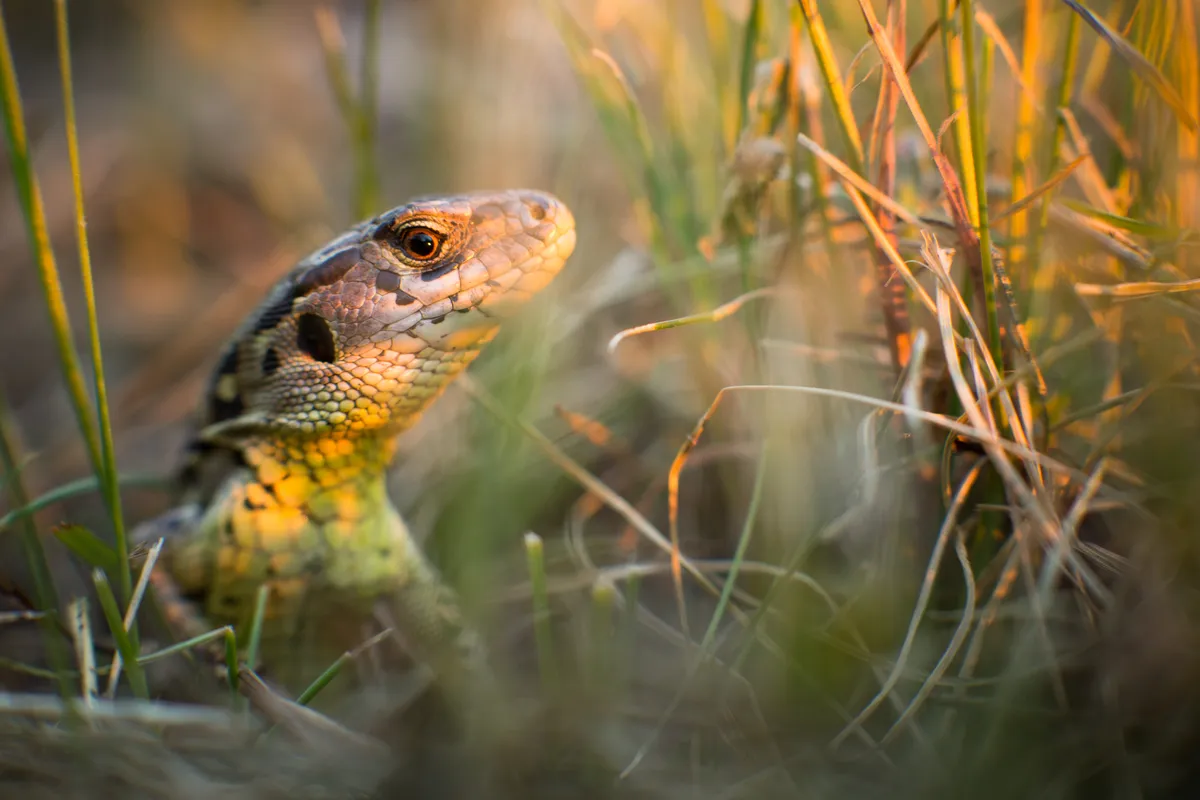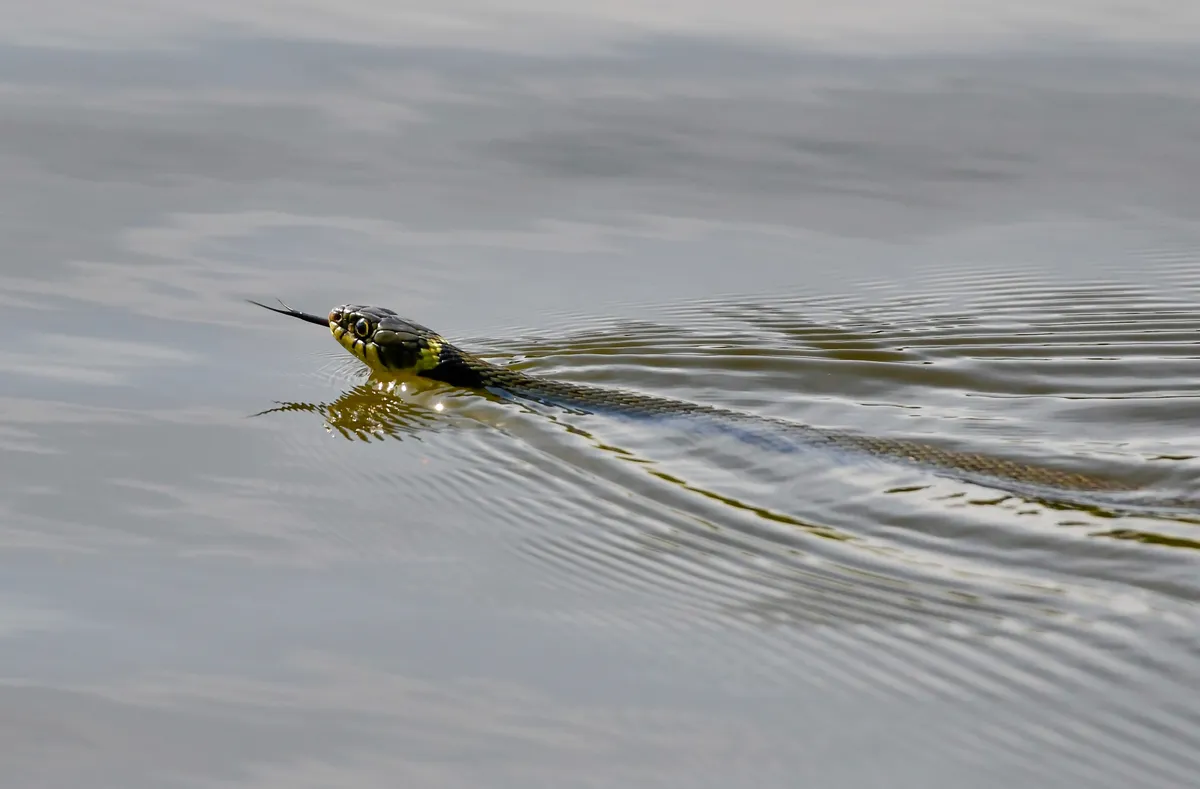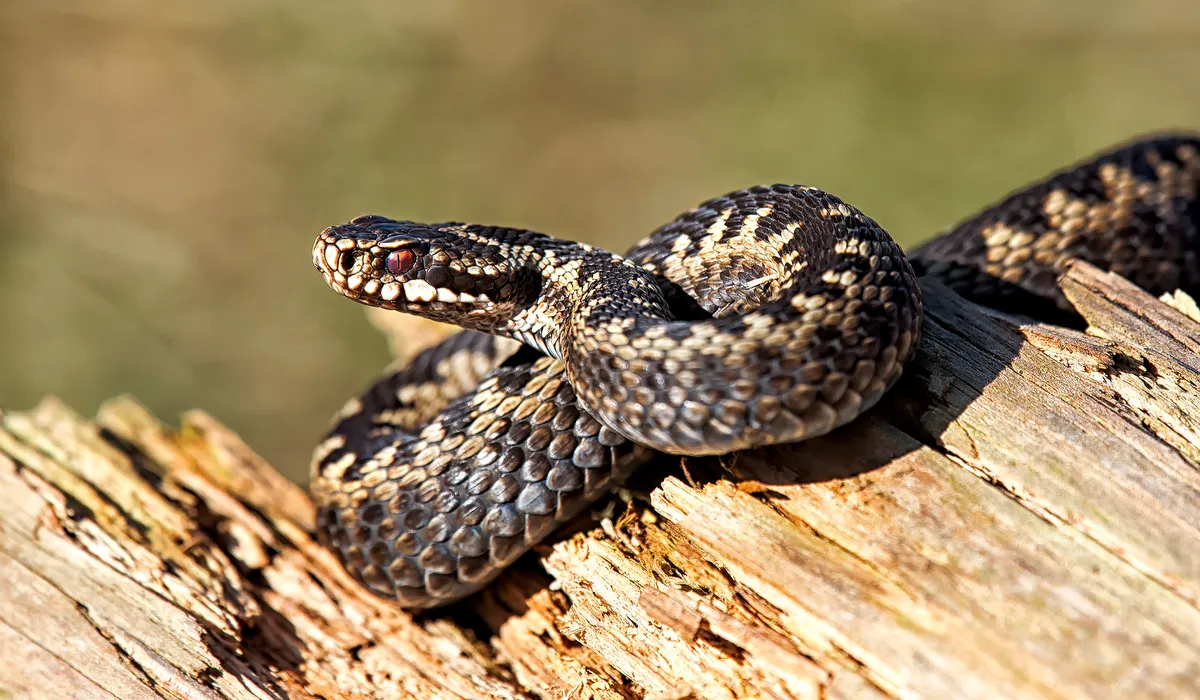Britain’s longest snake, the grass snake – Natrix helvetica – prefers wetlands where it hunts frogs, newts, fish and small mammals, sometimes swimming underwater to catch its prey.
It is the UK’s most common and adaptable snake and is often found in gardens, particularly compost heaps.
If caught, a grass snake will spray a liquid from the cloaca. This has a powerful smell, a rather heady mix of rotten fish, garlic and ground coffee, which will deter predators. The aroma lingers for many hours if it comes into contact with clothing and some snakes will also feign death, with mouth agape and tongue hanging limp, to accentuate the notion that they are not worth eating.
Interested in learning more about British wildlife? Check out our guides to snakes, frogs and toads, and deer.
Reptiles of the British Isles
Discover the fascinating world of snakes, lizards and slow worms with BBC Countryfile Magazine's guide to Britain's six native reptiles.

What does a grass snake look like?
They are green in colour, which ranges from lime to deep olive, with a distinctive yellow collar (after which they are also named), faint black stripes and pale bellies that are marked with dark scales unique to the individual.
How big is a grass snake?
Our largest native reptile, the grass snake can grow to a length of 1.5 metres with larger specimens reported.

Grass snake distribution
Grass snakes are rarely found north of the Scottish border, although climate change could encourage a gradual spread north. Milder winters might impact their ability to hibernate, though. Stirring too soon only to be stung by a late winter blast. A peril facing all of our hibernating species.
For now though, the grass snake remains the most likely serpent to encounter in England and Wales.
What do grass snakes eat?
Grass snakes are not venomous but are ambush predators and their favoured diet is amphibians, although they will also eat small fish, rodents and birds.
Do you know your snakes?
There are three native types of snake in the UK: adder, grass and smooth snakes. All three are most active in warm weather, and look to hibernate in the colder months. Find out more with our expert guide.

Grass snake habitat
Grass snakes are known for their love of water and are excellent swimmers.
Away from water, grass snakes are familiarly found around compost heaps. They are oviparous and the microbial fermentation that occurs within rotting vegetable matter is ideal for incubation of their eggs.
The eggs themselves are around 25mm long and are laid in clusters of 10 to perhaps 40, and generally hatch in late August and early September. The resulting hatchlings are around 15cm in length and are immediately independent.
